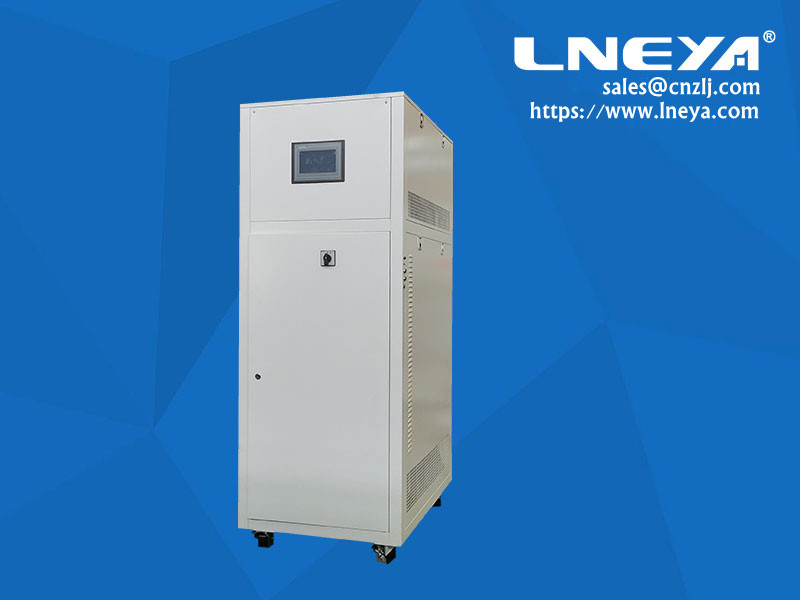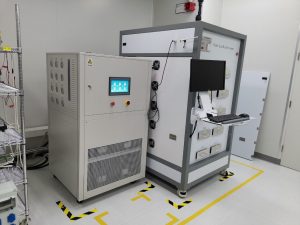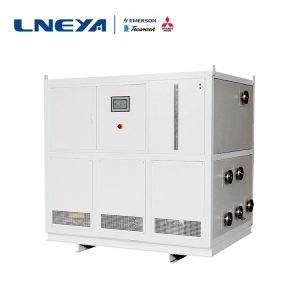Quali sono i metodi di collegamento più comuni per i refrigeratori industriali?

There are several connection methods for industrial chillers, which are suitable for pipe connection under different conditions.
First, welding connection
Welding is the most important and widely used connection method in pipeline engineering. Welding connection is a direct and fixed connection between pipe sections; it is commonly used in large-diameter steel pipes, high-temperature and high-pressure pipes, overhead steel pipes, buried or laid in trenches, etc. . It has obvious advantages such as high strength and tightness of the interface, omission of fillers and joint accessories, fast construction speed, and no limitation of pipe diameter; but it also has the advantages of non-disassembly, complex interface operation technology, and welding equipment and welder cooperation during construction. And other shortcomings.
Second, threaded connection
Threaded connection (also called threaded connection), it is suitable for pipes with small working pressure and small nominal diameter (dn≤32mm), as well as the connection of pipes with threaded valves, instruments, and equipment. When connecting, the joint should be smeared with filler prepared by lead oxide and glycerin, and evenly spread on the thread of the pipe thread (do not apply in the valve), or use PTFE plastic tape as the filler. The filler shall not protrude into the pipe to avoid reducing the pipe. On the end face, it is strictly forbidden to replace the filler with white painted hemp wire, and the wire connection must be tightened once, and shall not be returned or loosened.
Third, flange connection
Flange connection is to add gaskets (materials) to a pair of flange plates fixed on two pipe fittings, and then tighten them with bolts to connect them into a detachable whole. It has high connection strength, good sealing performance, convenient disassembly, and standardization of production. Therefore, it is widely used in equipment connections between pipes and flanged pipe fittings or flange interfaces, pipes and flange valves, and pipes. The location that needs to be disassembled and overhauled. During installation, a rubber plate gasket with a thickness of 4mm should be placed in the notch. The gasket shall not have uneven thickness, bevel or notch.
Riassumere
We at LNEYA will make a specific analysis according to the customer’s specific working conditions. If you have equipment requirements or equipment problems, please contact us sales@lneya.com
Raccomandazioni correlate
-
Risoluzione dei problemi di guasto del sistema di refrigerazione delle apparecchiature di prova per l'invecchiamento dei materiali a bassa temperatura
1733È molto importante anche la manutenzione regolare del sistema di prova dell'invecchiamento a bassa e ad alta temperatura dei materiali e la risoluzione dei problemi del sistema di refrigerazione. Ecco alcuni suggerimenti. 1. Scarico a doppia pressione, dissipazione del calore...
Visualizza dettagli -
Analisi della manutenzione del congelatore senza schermo
2082Il congelatore con apertura a schermo è un tipo di apparecchiatura utilizzata nella lavorazione industriale del freddo. Il produttore del congelatore con apertura a schermo LNEYA ricorda a tutti che se il frigorifero con apertura a schermo viene utilizzato per lungo tempo, è necessario un intervento di manutenzione...
Visualizza dettagli -
How to choose a glass reactor? How to match the temperature control system?
1508Glass kettle reactors are required for many laboratory equipment and are generally used with temperature control systems. In the chemical and pharmaceutical fields, the imported glass reactor is basically a necessity, and the refrigeration heatin...
Visualizza dettagli -
Come evitare un funzionamento errato del termostato di riscaldamento e raffreddamento?
1469When the user is running the heating and cooling thermostat, the operation needs to follow the instructions, so how to avoid inappropriate operations? Excellent design of hot and cold thermostat: The LNEYA heating and cooling thermostat has a mul...
Visualizza dettagli
 Refrigeratori industriali LNEYA Produttore Fornitore
Refrigeratori industriali LNEYA Produttore Fornitore














